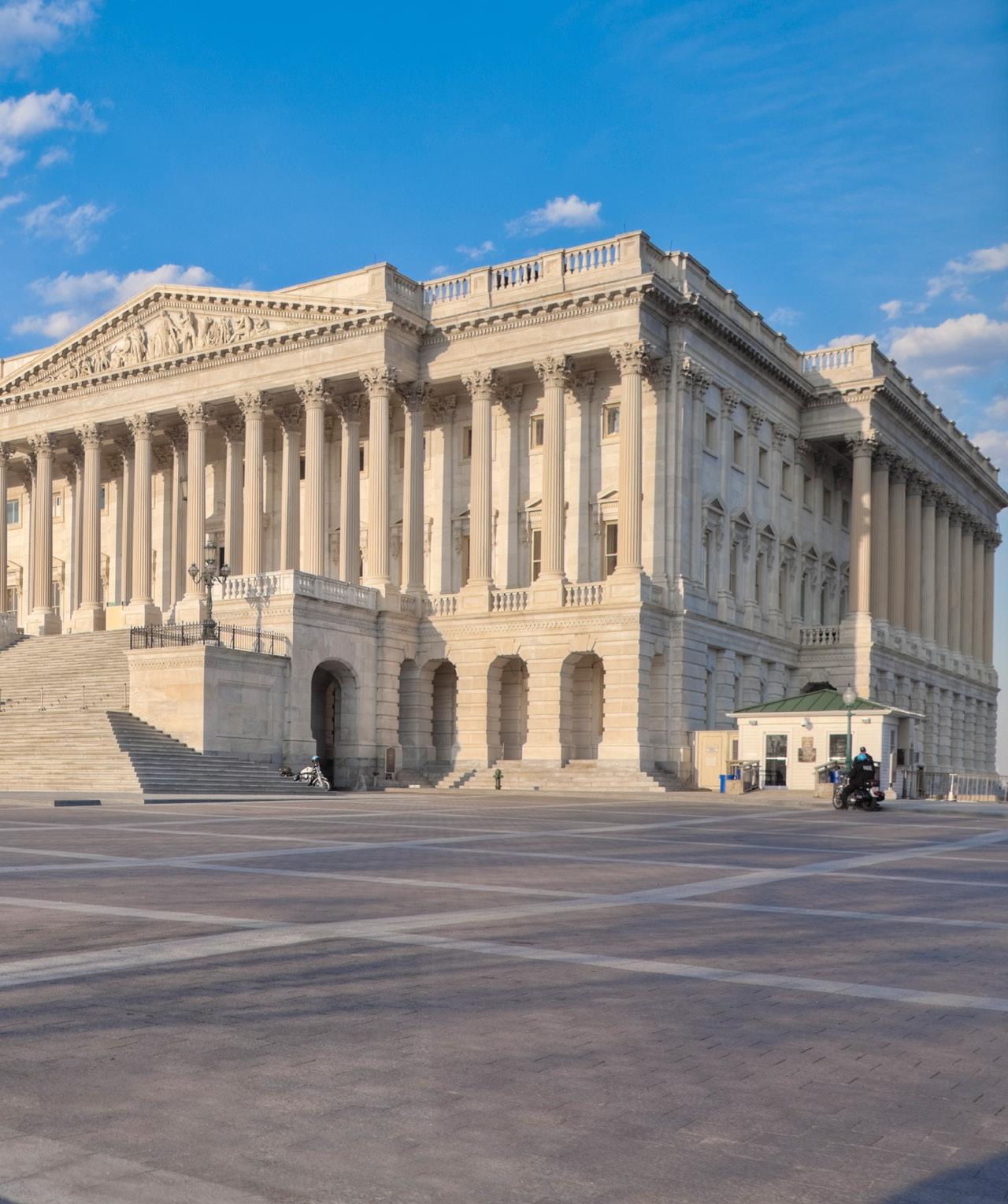
3 minute read
Ag Policy and Programs
by Pinion
Outlook on Ag Policies and Programs
Three main policies that ag businesses need to track moving forward
Advertisement
This year promises to be an active year in Washington, D.C. for U.S. agriculture. KCoe Isom’s advisory teams will be closely monitoring developments in Washington and working to shape federal policies to ensure they help, and do not hurt, U.S. agriculture.

1. Implementation of the Infrastructure Bill
In 2021, Congress passed and the President signed the bipartisan infrastructure bill. This $1 trillion package contains funding for roads, bridges, dams, locks, and ports. We ship our products down our inland waterways and on to overseas markets. We use roads and bridges to get our food and biofuels to domestic markets. And ports are important both for our exports and for imports of farm inputs. In recent years, other countries (including Brazil) have already made significant investments in their domestic infrastructure, while China has been investing heavily in infrastructure both in China and in other countries. These investments are helping other countries to compete with America. The bipartisan infrastructure legislation will make much-needed investments in our domestic infrastructure, ultimately benefiting the American farmer. In addition to the investment in transportation infrastructure, the legislation also makes a historic $65 billion investment in rural broadband. This is on par with rural electrification of the 1930s – by way of comparison, the Rural Electrification Act authorized in 1936 the expenditure of $410 million ($8 billion in 2021 dollars) to bring electricity to our farms and ranches. This $65 billion investment in rural broadband will wire our schools, hospitals, rural health clinics, as well as create jobs and help our rural communities to compete globally in the digital age.
2. Carbon Programs for Agriculture
As noted later in the sustainability section of this report, the world is transitioning rapidly in response to climate change. This is affecting consumer demand, energy production, and transportation. This transition also may bring significant benefits to U.S. agriculture. Few market sectors hold more potential for helping to capture greenhouse gases than agriculture. Practices such as no-till farming and planting of cover crops are projected to capture millions of tons of carbon that otherwise would be released into the atmosphere. The Biden Administration has indicated that it wants to work with farmers to address climate change through voluntary programs that will provide payments to farmers to take actions that help capture carbon. Congress and the U.S. Department of Agriculture will undoubtedly roll out new programs in this field in the coming year. Expectations are that, working with farm groups, Congress, and the USDA will continue to shape these programs to fit the needs of farmers. Structured correctly, these programs could help farmers to improve their profitability alongside efforts to continue to grow the food and fiber that feeds, clothes, and fuels the world.
3. 2023 Farm Bill
This year, Congress will begin working in earnest on the 2023 farm bill. We expect that many of the programs that Congress will consider will focus on climate change and practices farmers can put in place to help lock up carbon. Beyond carbon, we also need to watch the farm bill discussions very carefully to make sure that Congress does not change farm program requirements in a way that would keep significant agriculture operations from participating. Late in 2020, the USDA rolled out a new rule that would have limited farm payments to operations that were attempting to transition from one generation to the next. Through a consortium of voices and pushback on these changes, the USDA ultimately withdrew their proposed rule. This is just one example of the types of challenges the food and ag industry may face this year. That is why KCoe launched the “Farm Program Fairness Coalition” with the purpose to bring farmers together to advocate for farm programs that work for our farms and families. To learn more about joining this coalition and working with us to protect American farmers, information can be found online at: www.FarmProgramFairness.com.









